
Review on 📶 Enhance and Expand Your Network with TP-Link AV600 Powerline WiFi Extender and WiFi Booster (TL-WPA4220 KIT) by Victor Glatzel

Good product! A useful guide for those who struggle.
As a professional computer technician, I needed this to solve the problem of one of my clients whose wireless signal was too weak to reach the other end of his house and outside the workshop. This solved the problem with very little effort. I've read a lot of reviews and troubleshooting tips before that helped, but here's how I did it and it was pretty easy. First, I changed the Linksys wireless router's default IP address from 192.168.1.1 to 192.168.2.1 and changed the DHCP range to start at 192.168.2.10. I did this because the TP-Link device uses the same default IP address 192.168.1.1 as most routers. So you should change your router first to avoid conflict. Second, I plugged a small device into the wall, connected a network cable to it, and connected it to the router. Then I pressed the "Pair" button on it and gave it a few seconds. I then plugged the larger device into another outlet in the same room and connected my laptop to it with a network cable. I did this to make sure the network connection was working. Make sure you turn off Wi-Fi on your computer so you're actually using a wired Ethernet connection. I ran speedtest.net and got the same speed as a desktop connected directly to the router. I then moved the TP-Link device to a building outside of where my client is using their laptop and tablets. Remember that the smaller TP-Link device stays close to the router and is always connected to the network as that is where it receives the signal and transmits it to the larger TP-Link device. Now that I had the device outside in the workshop I plugged it in and plugged in my laptop and the speed dropped to around 5Mbps. It was about 58Mbps inside so there was a huge drop in speed when I went outside but who knows what the wiring situation was and it was on a separate circuit in the breaker box and all that so I was expecting that . Anyhow, the device proved we still had a connection, albeit slower, but it worked, so I knew we were in business. Now the hardest part. I had to get this thing to clone the Wi-Fi router. I struggled with that. I pressed the WPS button on the router, then the pairing button on the TP-Link, but it didn't work. At first I thought it was working, but it's slightly confused because you're still connected to the router's actual WiFi. After several attempts to clone Wi-Fi via WPS/pairing, I went into the router settings and turned off Wi-Fi to have an accurate picture and it turned out that TP-Link hadn't cloned anything. He created his own separate Wi-Fi network, but I actually had to clone the existing Wi-Fi network, which he didn't do. Everyone else who looked at this complained about how difficult it was to use a software tool to set this thing up, but I had no problems with it. Following the instructions, I navigated to [.]#Utility and downloaded the powerline scan utility. Installed and logged in as admin/admin and voila, I was in. In settings I went into WiFi settings and changed the default SSID to my existing WiFi router's SSID and used the same WPA2-PSK password and now it has been cloned. ! As a test, I disabled WiFi on the router and only connected to TP-Link WiFi and it worked. I ended up taking the TP-Link device to my client's garage, which worked well as it was now hooked up to the same wiring as the house and the speed remained very high, around 40Mbps, and as a bonus the Wi -Fi It was now generating closer to the workshop outside and had a great signal and around 30mbps. I then re-enabled the WiFi on the router and the laptop initially showed a weak signal as it was still connected to the TP-Link device on the other side of the house in the garage but after a few seconds the laptop figured out it was now closer to the main wifi router and automatically connected to it. So if you're just using this for a wired connection, it couldn't be easier. Just plug in the small device first and click "pair" once it's connected to your router via Ethernet. Then plug the larger device where you need it and you're connected at both ends. If you need to clone your wifi, use powerline scan utility and it's very simple. Hope that helps!
- Network Adapter
- Some Problems
New products
Comments (0)
Top products in 🖧 Network Adapters
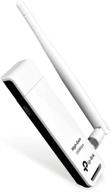
High Gain Wireless Network Adapter - TP-Link Nano USB Wifi Dongle with 150Mbps Speed for PC Desktops and Laptops. Compatible with Win10/8.1/8/7/XP Linux 2.6.18-4.4.3, Mac OS 10.9-10.15 (TL-WN722N)

46 Review

Wi-Fi adapter D-link DWA-140, black

46 Review
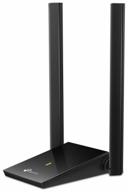
TP-Link Archer T4U Plus AC1300 USB 3.0 WiFi Network Adapter

29 Review
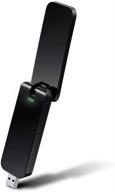
Enhance Internet Speed with TP-Link AC1200 Wireless Dual Band USB Adapter (Archer T4U V1)

40 Review
Another interesting products
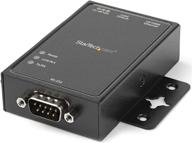
🌐 StarTech.com NETRS2321P: 1-Port RS232 to Ethernet IP Converter, Serial over IP Device Server - Black

5 Review
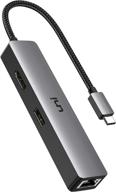
🔌 uni USB C Hub with Ethernet Adapter, 4K HDMI, Gigabit Ethernet, and 3 USB 3.0 Ports for MacBook Pro, iPad Pro, XPS

11 Review
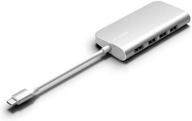
🔌 Juiced Systems Silver BizHUB USB-C Multiport Gigabit HDMI Hub with 3 USB 3.0 Ports, Gigabit Ethernet, 4K HDMI, SD/Micro SD, and USB-C Power Delivery

11 Review
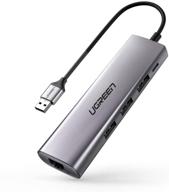
UGREEN USB 3.0 Ethernet Adapter Hub with RJ45: Fast Gigabit Ethernet Converter, 3 Ports USB 3.0 Hub Compatible for MacBook, iMac, Surface Pro, Chromebook, Laptop, PC

11 Review

